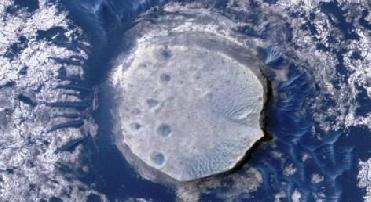
Artist's Conception of S1020459
NEW DELHI (BNS): The discovery of a relic star has provided support to the theory that our galaxy underwent a "cannibal" phase, growing to its current size by swallowing dwarf galaxies and other galactic building blocks.
The star located in the dwarf galaxy Sculptor some 290,000 light-years away is believed to have been among the second generation of stars to form after the Big Bang, according to a report jointly issued by the Observatories of the Carnegie Institution.
Astronomers said the star has a remarkably similar chemical make-up to the Milky Way's oldest stars.
To astronomers, "metals" are chemical elements heavier than hydrogen or helium. Because they are products of stellar evolution, metals were rare in the early Universe, and so old stars tend to be metal-poor.
In order to find the most metal-poor stars, Evan Kirby, a Caltech astronomer, developed a method to estimate the metal abundances of large numbers of stars at a time, making it possible to efficiently search for the most metal-poor stars in dwarf galaxies.
Among stars he found in the Sculptor dwarf galaxy was one faint, 18th-magnitude speck designated S1020549.
Spectroscopic measurements of the star's light with Carnegie's Magellan-Clay telescope determined it to have a metal abundance 6,000 times lower than that of the Sun -- five times lower than any other star found so far in a dwarf galaxy.
The researchers measured S1020549's total metal abundance from elements such as magnesium, calcium, titanium, and iron.
The overall abundance pattern resembles those of old Milky Way stars, lending the first observational support to the idea that these galactic stars originally formed in dwarf galaxies.
Josh Simon of the Observatories of the Carnegie Institution said the extremely low metal abundance in S1020549 study marks a significant step towards understanding how our galaxy was assembled.
"The original idea that the halo of the Milky Way was formed by destroying a lot of dwarf galaxies does indeed appear to be correct," he said.
 Previous Article
Previous Article Next Article
Next Article













The Indian Air Force, in its flight trials evaluation report submitted before the Defence Ministry l..
view articleAn insight into the Medium Multi-Role Combat Aircraft competition...
view articleSky enthusiasts can now spot the International Space Station (ISS) commanded by Indian-American astr..
view article